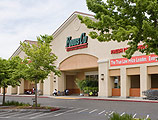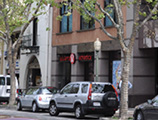“But is retail OK?”
Visibly distressed by his passel of non-performing assets, the banker lit up at last and exclaimed, “Retail is the golden child of our entire portfolio. Shopping center loans are our best assets.” The banker was speaking of bread-and-butter shopping centers, real estate Wall Street had largely written off when e-commerce took flight nearly 20 years ago.
A little exposition. There are five basic types of commercial real estate: retail, industrial, office, multi-family, and hotel. As Wall Street saw it, retail had been trailing this pack long before the advent of Amazon. Why? Retail had been overbuilt for decades, and its returns were less certain and usually outpaced by its RE cousins. Then, e-commerce hit its stride, and the business media pounded out a steady drumbeat of “Retail is Dead”, evaporating what little favor retail had among institutional investors. Couple this lack of demand with the higher interest rates wary banks charged for retail loans—they, too, read its weekly obituaries—and you had significantly lower prices for retail than for, say, office and multi-family.
How did an also-ran become a golden child? Money, like life, is graded on the curve. Retail’s competitors for big money have stumbled: office fell off a cliff, apartments no longer pencil, industrial has plateaued and hotel has always been a scary sideshow. Meanwhile, so comparatively little new retail has been built since 2006 that empty inventory no longer plagues the asset class. But most importantly, the experts were wrong again. Rather than kill retail, the e-commerce tsunami succeeded only in washing out the gasping merchants already on life support. Perhaps a little soggy, but alive and well were the clever shopkeepers that had added selling on-line to their menu and the convenience merchants, notably supermarkets, that had been never touched by e-commerce.
Then bricks-and-mortar retail roared back as the virus hysteria subsided, and Wall Street realized that e-commerce and home delivery would make no further inroads on “essential retail”, that is, supermarket-anchored neighborhood shopping centers. Paying attention, Wall Street noticed that these properties were nearly 100 percent leased, with merchants sales and rents trending upward. Suddenly, once ignored shopping centers—provided they are top of class—were institutional darlings. And the darlings of private equity and family offices (guys so rich they have their own investment advisors).
This surging demand means that if you happen to own a first-rate center in a quality town with real barriers to entry (i.e. forget Houston), your property is worth as much as ever despite RE’s general plunge in values. A top-quality supermarket center that was selling at a five percent return pre-pandemic is fetching roughly that amount today. Why? Because its buyer pool doesn’t require debt; the institutions, the private equity and family office players are paying cash for these top assets.
Even lesser quality shopping centers that do require debt (about 70 percent do) are selling briskly with multiple offers on all but the most woebegone properties. Again, tenant demand is strong, occupancies are approaching 100 percent, but prices are considerably lower than for the best-of-class properties because rising interest rates are like gravity—they draw everything back to earth. A good, but not great, center in need of financing might sell as much 25 percent cheaper than its tonier counterpart.
A big caveat. Generalizing about retail is akin to painting a model airplane with a paint roller—that is, using way too broad a brush. By way of example, our modest retail portfolio also contains a handful of mixed-use projects. In contrast to the sunny suburbs, our urban retail is dependent on a daytime population that swears it’s really working from home and thus we’re encountering both a rise in vacancies and a notable decline in rents.
It pays to diversify.






















